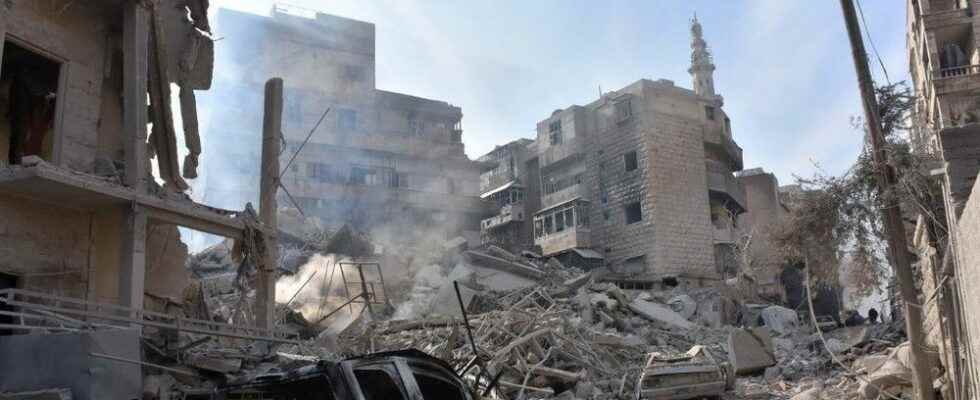On the fourteenth day of its offensive, the Russian army continues to rain down a carpet of bombs on Ukraine. The objective: to bring down the fierce resistance of the Ukrainian army, raising fears of the worst for Kiev, which has not been affected as much as other major cities in the country: in Sumy, located 350 kilometers to the east of the capital, at least 21 people were killed on Monday evening in a strike that hit a residential area. In Kharkiv, Mariupol or Cherniguiv, we deplore the same scenes of desolation.
“The Russian army is trying to encircle Kiev and increase the pressure. But it is still hesitating before using intensive bombardments as it is already doing elsewhere”, observes General Dominique Trinquand, military expert and former head of the mission. French at the UN. At this stage, the most intense fighting is taking place in the northern and western suburbs of the capital, while the roads to the east are blocked by Russian tanks. But faced with the difficulty of making a real breakthrough, many observers fear a severe hardening of Russian strikes.
Russian brutality in Syria and Chechnya
In the background, the memory of the extreme brutality of the Russian army in Syria and Chechnya. In 2016, Russian aircraft ruthlessly bombarded civilian areas in Aleppo and other Syrian cities, before the stronghold of resistance fell to Bashar al-Assad’s troops, allied with Moscow, a few months later. . The Russian forces had notably been accused of resorting to the so-called “double-tap” tactic, consisting of waiting for help to come out of the victims of the rubble after a first bombardment, before striking a second time at the same place.
The former district of Zebdiye, in the city of Aleppo in Syria, on December 23, 2016, after it was taken back under control by the Syrian forces supported by the Russian air force
George OURFALIAN / AFP
A few years earlier, the Russian forces had also drowned Grozny, the Chechen capital, under a deluge of fire during the first Chechen war (1994-1996), then had almost completely destroyed it four years later to quell a new separatist revolt. According to the NGO Human Rights Watch, around 10,000 civilians died during the second siege, decided by the young Prime Minister at the time, Vladimir Putin.
With its 3.5 million inhabitants and its status as a stronghold of the Ukrainian resistance, can Kiev suffer the same fate? “There are a lot of historical or religious buildings that the Russians could try to preserve in the center, but they could crush the suburbs of Kiev under the bombs, judge Gustav Gressel, specialist on Russia at the European Council on International Relations. expect systematic bombardments to advance district by district, in order to exhaust the population and the support of the Ukrainian forces defending the city.”
“Shelling against civilian populations”
At the risk of dramatically increasing the number of victims in the Ukrainian population. According to the Office of the United Nations High Commissioner for Human Rights, the conflict had already killed at least 406 civilians on Monday March 8. “A figure probably undervalued”, by the admission of the organization. Russian military doctrine, which advocates the massive use of aerial bombardment and artillery to destroy the enemy, leaves little room for precision. “The more the Ukrainians will resist, wherever it is, the more the Russians will deploy brutal means of destruction to force the opponents to surrender”, points out Olivier Kempf, director of the strategic cabinet La Vigie.
“At the start, the Russian army thought it could take Kiev in a few days with low-intensity combat, but it didn’t go as planned at all,” said François Heisbourg, special adviser at the Foundation for Strategic Research. ‘where the Russian temptation to regain control by raising the level of violence with shelling against civilian populations, as in Kharkiv.”
Since the beginning of the Russian offensive, this city, the second largest in the country, has been the subject of intense bombardments affecting indiscriminately residential areas, hospitals, schools and other public institutions. “There is no longer an area where an artillery shell has not yet struck,” an adviser to the Ukrainian interior minister said on March 2. Human Rights Watch also accused Russia for using cluster bombs in the city – propelling a multitude of smaller explosive projectiles. For Kiev, 500 kilometers further west, the future looks just as bleak.
Paul Véronique with Clement Daniez
